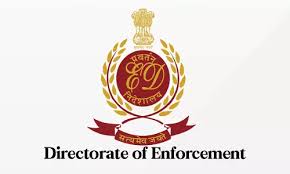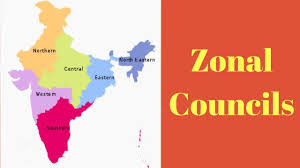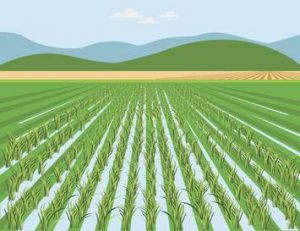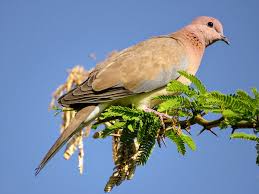Today’s Current Affairs: 11th July 2025 for UPSC IAS exams, State PSC exams, SSC CGL, State SSC, RRB, Railways, Banking Exam & IBPS, etc
Table of Contents
Enforcement Case Information Report:

The Enforcement Directorate (ED) recently registered an Enforcement Case Information Report (ECIR) against 29 individuals, including actors, television hosts, social media influencers, and YouTubers, for allegedly promoting illegal betting applications.
- The ECIR is a formal entry of the complaint lodged by the Enforcement Directorate (ED).
- Whenever the ED receives information about the commission of an offence of money laundering, it is converted into a formal report known as the ECIR.
- It serves as a starting point for ED’s proceedings, including the attachment of assets and arrests.
- There is no mention of the ECIR in the Prevention of Money Laundering Act, 2002 (PMLA Act), or Rules.
- Since the PMLA does not necessitate the registration of ECIR, it is considered a non-statutory document.
- However, as per the practice of ED, the ECIR is lodged before taking any action under the PMLA Act.
- The ECIR under the PMLA Act is similar to the First Information Report (FIR) lodged by the Police for cognizable offences.
- However, the Supreme Court held that an ECIR cannot be equated with an FIR, which is mandatorily required to be recorded and supplied to the accused.
- As per the ED, ECIR is a document meant for identification of a particular case and for departmental convenience and is purely an internal document.
- ED is not legally bound to provide a copy of the ECIR to the accused.
- Since ECIR lacks statutory status, there is no requirement to quash them.
Zonal Councils: In News

The Union Home Minister recently said zonal councils have transformed from being mere discussion forums into “engines of cooperation”, noting that 83% of issues taken up in their meetings have been resolved.
- The idea of the creation of Zonal Councils was mooted by the first Prime Minister of India, Pandit Jawahar Lal Nehru, in 1956.
- The Zonal Councils are the statutory bodies.
- Five zonal councils were set up in 1957 under Sections 15-22 of the States Reorganisation Act, 1956.
- Objective is to provide a common meeting ground to the states and UTs in each zone for resolution of interstate and regional issues, fostering balanced socio-economic regional development and building harmonious Centre- State relations.
- The present composition of each of these five Zonal Councils is as follows:
- Northern Zonal Council: Haryana, Himachal Pradesh, Jammu & Kashmir, Ladakh, Punjab, Rajasthan, Delhi, and Chandigarh.
- Central Zonal Council: Chhattisgarh, Uttarakhand, Uttar Pradesh, and Madhya Pradesh.
- Eastern Zonal Council: Bihar, Jharkhand, Odisha, and West Bengal.
- Western Zonal Council: Goa, Gujarat, Maharashtra, and Daman & Diu and Dadra & Nagar Haveli.
- Southern Zonal Council: Andhra Pradesh, Telangana, Karnataka, Kerala, Tamil Nadu, and Puducherry.
Agricultural Monitoring and Event Detection API:

Google recently launched the Agricultural Monitoring and Event Detection (AMED) API that provides information on crops and field activity across India.
- AMED is an artificial intelligence (AI)-based open-source application programming interface (API) launched by
- It provides field-level crop data, specifically helping in monitoring crops and detecting agricultural events at individual fields across India.
- The AMED API details the type of crop on a given field, crop season, and the field’s size and also provides historical information about the agricultural activity on it for the last three years.
- These insights can help significantly improve agricultural management on farms and also address the specific needs of each crop – including the right soil and water conditions, growth patterns, and climatic needs – as well as predict crops’ harvest volume.
- Google will be sharing the AMED API for agriculture startups to find more innovative solutions to improve the agriculture ecosystem.
- AMED API data is also refreshed nearly every two weeks, enabling the ecosystem partners leveraging AMED API access to continuously updated information that accounts for field-level changes.
- AMED API builds on the Agricultural Landscape Understanding (ALU) Research API that the company launched last year.
- It uses satellite imagery and AI to map field boundaries and land use across India.
Laughing Dove:

It is a small pigeon that is a resident breeder in Africa, the Middle East, and the Indian Subcontinent.
- Scientific Name: Spilopelia senegalensis
- Other names include laughing turtle dove, palm dove, and Senegal dove, while in India the name of little brown dove is often used.
- The species is found in much of sub-Saharan Africa, Saudi Arabia, Iran, Afghanistan, Pakistan, and India.
- It is also found in Israel, Lebanon, Syria, the UAE, and Turkey (these populations may be derived from human introductions).
- It was also introduced in Western Australia.
- It is found in dry scrub and semi-desert habitats where pairs can often be seen feeding on the ground.
- Conservation Status: IUCN Red List: Least Concern.
World Population Day 2025:

This year’s World Population Day will take place on Friday, July 11, 2025, with the theme “Empowering young people to create the families they want in a fair and hopeful world”
- World Population Day (WPD) is Observed annually on July 11, World Population Day is a United Nations initiative aimed at raising awareness about the challenges and opportunities of global population growth.
- With the world population now surpassing 8.2 billion, the day highlights the importance of sustainable development, equitable access to resources, reproductive rights, and gender equality.
- World Population Day 2025 Theme: ‘Empowering young people to create the families they want in a fair and hopeful world’.
- WPD was established by the then-Governing Council of the United Nations Development Programme (UNDP) in 1989, following the global interest generated by “Five Billion Day” on 11 July 1987, when the world’s population reached 5 billion.
- Dr KC Zachariah, a senior demographer at the World Bank, suggested that this day be commemorated.
Medium Altitude Long Endurance Drone:

India has accelerated the procurement of 87 Medium Altitude Long Endurance (MALE) drones from local manufacturers.
- MALE drones are Unmanned Aerial Vehicles that have the capability to fly over 30 hours at a maximum altitude of at least 35,000 feet.
- These drones are equipped with advanced surveillance and combat capabilities: including real-time intelligence, surveillance, and reconnaissance (ISR) in all kinds of terrain.
- These will enhance surveillance along its sea and land borders.
- Purpose of Medium Altitude Long Endurance Drones: Primarily used for surveillance, reconnaissance, and strike missions.
- These drones will enhance the surveillance capabilities of all three services, especially the Indian Air Force to monitor the Eastern and Western Border
- The procurement of 87 drones is aimed at bolstering real-time monitoring and operational readiness across critical areas.
- The 87-drone MALE project serves two parallel aims: fill the medium-altitude tier between smaller tactical UAVs and the high-altitude Guardians, and indigenise a capability so far dominated by Israeli imports.
Polycyclic Aromatic Hydrocarbon:

Researchers from Australia, Sweden, and the UK studied the indenyl cation, C9H7+ and revealed how Polycyclic aromatic hydrocarbons molecules survived in Taurus Molecular Cloud 1 (TMC1).
- Polycyclic Aromatic Hydrocarbons (PAHs) are flat, ring-shaped molecules of carbon and hydrogen.
- Astronomers think they make up a fifth of all carbon in interstellar space.
- There is a hypothesis that meteors brought PAHs from space to young earth and created the first building blocks of life, attaching important value to their ability to survive in space.
- They have a relatively low solubility in water but are highly lipophilic and are soluble in most organic solvents.
- These hydrocarbons, on earth, are formed through incomplete combustion or pyrolysis of organic materials, such as fossil fuels and biomass
- When PAHs collide with other particles or absorb high-energy radiation, they can have more internal energy than their weakest chemical bond can handle.
TALASH Initiative:

The National Education Society for Tribal Students (NESTS), an autonomous organization under the Ministry of Tribal Affairs launched the TALASH initiative.
- The Tribal Aptitude, Life Skills and Self-Esteem Hub (TALASH) is a national- program to support the all-round development of students in Eklavya Model Residential Schools (EMRSs).
- It was launched by National Education Society for Tribal Students in partnership with UNICEF India.
- It aims to improve both the education and personal growth of tribal students across India.
- The name TALASH, reflects a focused search for self-awareness, life skills, and career clarity among tribal youth.
- The first initiative of its kind in India is aimed specifically at tribal students.
- It is expected to benefit over 1,38,336 students enrolled in EMRSs across 28 States and 8 Union Territories, making it a truly national movement for inclusive education.
- It is an innovative digital platform designed to equip EMRS students with essential tools for self-discovery and career planning.
- It promotes self-awareness, helps students make informed career choices, and builds essential life skills.
Lake Turkana:
Scientists have extracted 18-20 million-year-old enamel proteins from extinct mammal fossils from the Lake Turkana Basin.It is located in the remote northern region of Kenya. It lies in the Eastern Rift Valley with its far northern end extending to Ethiopia. Three rivers, including Omo, Turkwel, and Kerio flow into the lake, but only the Omo River is perennial, contributing 90 percent of the inflow of water each year. It stands as Africa’s fourth-largest lake and the largest permanent desert lake in the world. It is designated as the UNESCO World Heritage site and is renowned for its unique biodiversity and cultural significance.
Empowering States Through Science:
National Institution for Transforming India (NITI Aayog), in its report “ A Roadmap for Strengthening State Science and Technology (S&T) Councils”, has called for reforms in the funding and governance of State S&T Councils. Science, Technology, and Innovation (STI) are vital to national development, with both Central and State S&T Departments playing key roles. The Centre-State S&T partnership began in 1971, led by Bharat Ratna Shri C. Subramaniam, through the creation of State Science & Technology Councils (SSTCs). Initially set up in Karnataka, Kerala, Uttar Pradesh, and West Bengal, SSTCs now exist in almost all States and UTs across India. SSTCs are supported by the Department of Science and Technology (DST), Ministry of Science and Technology under the State Science and Technology Programme (SSTP). DST provides budgetary assistance to S&T Secretariats of States and UTs. S&T Councils also receive state government funding, though the levels vary significantly.
INS Nistar – Diving Support Vessel (DSV):
The Indian Navy will commission INS Nistar, its first indigenously designed Diving Support Vessel (DSV), at Visakhapatnam. This marks a key milestone in India’s underwater rescue and maritime self-reliance journey.INS Nistar is India’s first indigenously developed Diving Support Vessel (DSV) designed for deep-sea diving, submarine rescue, and underwater operations. It serves as the mother ship for the Deep Submergence Rescue Vehicle (DSRV).
AI-powered Machine Vision-Based Inspection Systems (MVIS):
Indian Railways and DFCCIL have signed an MoU to deploy AI-powered Machine Vision-Based Inspection Systems (MVIS) for real-time detection of rolling stock defects.MVIS is an AI–ML integrated visual inspection platform developed to monitor and detect defects in freight train rolling stock using high-resolution cameras and computer vision. It automates inspection, enhances maintenance efficiency, and reduces the risk of accidents. Developed by: DFCCIL in collaboration with IISc Bengaluru and start-up L2M.




